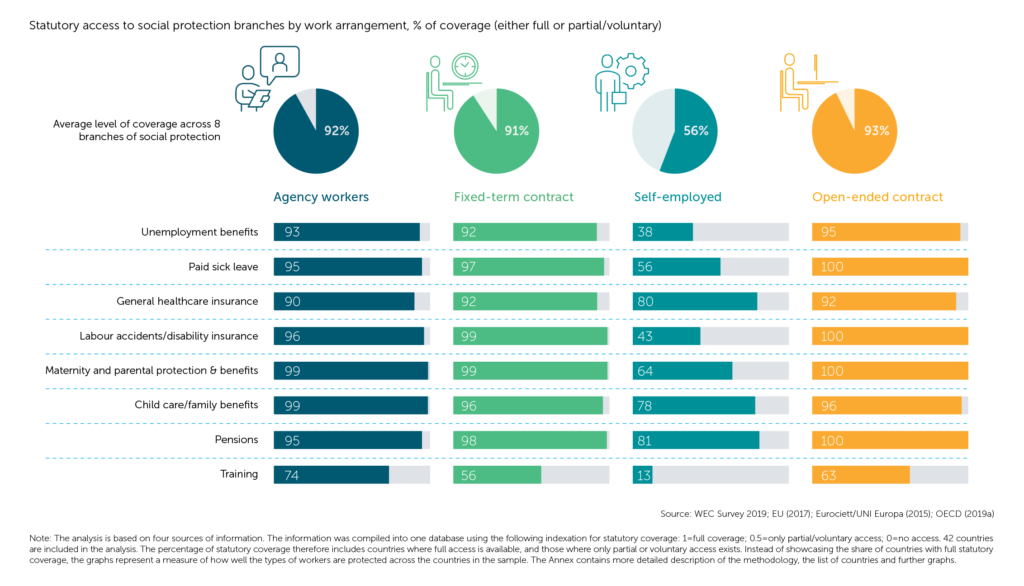Social protection relates to the collective systems and rights created by states to support their citizens. It includes support for labour market risks, such as unemployment and occupational accidents; and also includes saving for retirement or training. Based on national circumstances, countries around the world have developed their own social protection systems. Often, workers and employers play a role in financing, managing and developing (sectoral) social protection schemes.
Most social protection systems were created and expanded in developed economies after the Second World War. Many were built to be supported by financial contributions as part of the employment relationship, and the open-ended contract in particular. As such, their (financial) fundament and business case is often based on different labour markets and social structures. As labour markets and societies evolve, social protection systems also need to adapt to sustain their support and added value for the people they aim to cover.
A key stake in this transformation is the development of social protection that is better tailored to the individual and the changing needs that people experience over the course of their (working) lives. Ensuring access to lifelong learning should be a key deliverable for social protection systems as jobs, labour market requirements and personal preferences will change more often.
Most of the global population isn’t appropriately covered by social protection; either because their government doesn’t provide it, or because they work in the informal sector where coverage is generally absent. Developing and expanding social protection schemes is a costly affair. Making them fit for purpose is therefore essential for their financial and societal sustainability.
 The COVID-19 pandemic has shown that basic minimum levels of protection need to be available to all workers irrespective of how engage with work. The WEC Social Impact Report 2020 analyses social protection coverage for 8 types of benefits across diverse forms of work and about 40 countries. It concludes that shows that an employment contract remains the key to formal social protection coverage. In 90% of the countries analysed, agency workers and workers in other forms of contractual employment enjoy full statutory access to unemployment and sickness benefits. Partial access to those benefits is available in the remaining countries. Self-employed workers are significantly more vulnerable than workers with an employment contract.
The COVID-19 pandemic has shown that basic minimum levels of protection need to be available to all workers irrespective of how engage with work. The WEC Social Impact Report 2020 analyses social protection coverage for 8 types of benefits across diverse forms of work and about 40 countries. It concludes that shows that an employment contract remains the key to formal social protection coverage. In 90% of the countries analysed, agency workers and workers in other forms of contractual employment enjoy full statutory access to unemployment and sickness benefits. Partial access to those benefits is available in the remaining countries. Self-employed workers are significantly more vulnerable than workers with an employment contract.
The report further establishes that one challenging feature of current social protection systems is the discrepancy between statutory and effective access to social protection benefits for employed workers. Eligibility criteria, such as thresholds in terms of working days to be reached, can prevent some groups to access benefits in case of unemployment and sickness.
The crisis can be used as an opportunity to speed up the innovation of safety nets, taking inspiration from the private employment services sector in providing protection schemes for a dynamic workforce. Read more on our proposals to speed up Social Innovation to ensure access to minimum levels of social protection on the road to recovery after the Covid-19 crisis.
The International Labour Organisation (ILO) and the World Bank have developed many policy initiatives related to social protection systems. Most of these are geared towards creating and expanding social protection in developing and emerging (labour) markets.
In developed economies, ensuring the (fiscal) sustainability of social protection systems is a growing focus. The work of both the OECD and EU is increasingly looking at social protection schemes in their member states and how they can adjust to changing societies and labour markets.